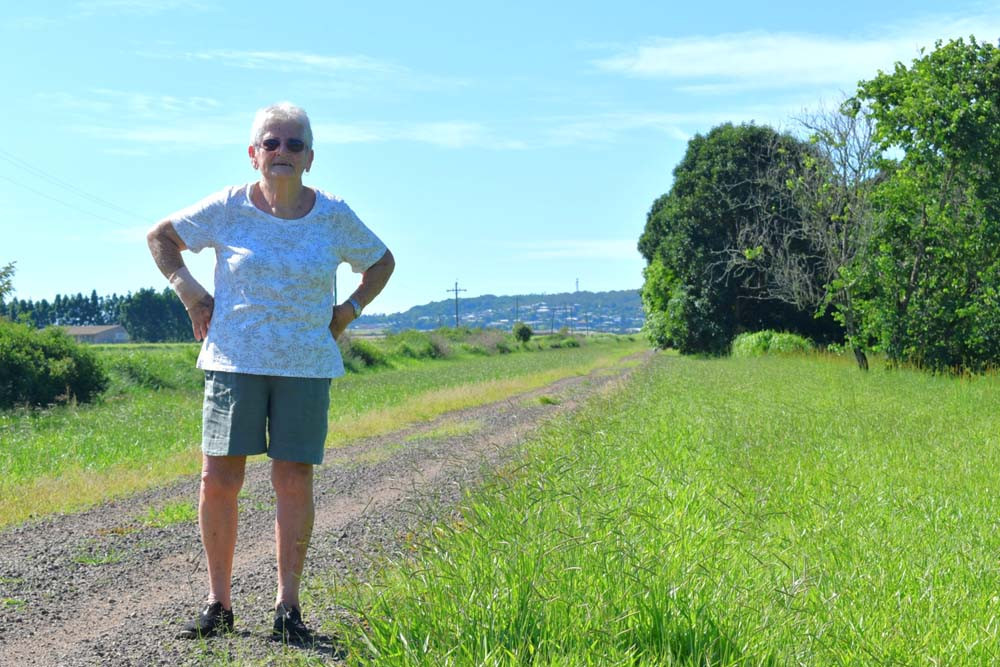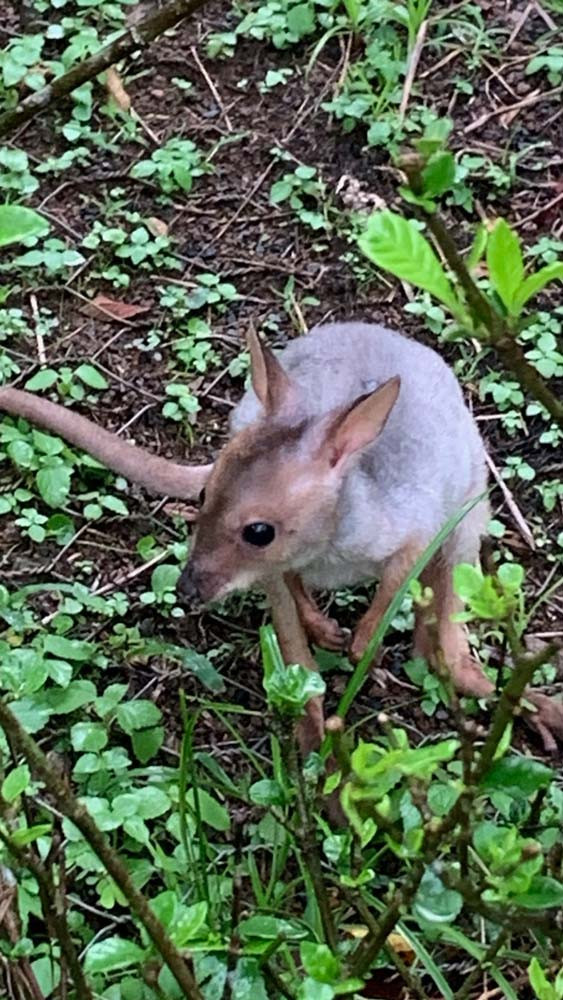Community & Business
23 January, 2025
Locals call for wildlife action
A GROUP of Tolga locals are outraged over the deaths of red-legged pademelons along the Atherton Tablelands Rail Trail, claiming it is a result of attacks by unleashed dogs.

Yvonne Cupitt has rescued two pademelon joeys in recent months and has seen many adults dead along the Rail Trail which she walks every morning.
Pademelons are small, compact wallabies found along coastal and subcoastal eastern Australia from Cape York to the Hunter Valley in New South Wales.
They are also found in the Tolga scrub – one of the last remaining fragments of the endangered Mabi rainforest on the Atherton Tablelands, with about 2% of original forest left.
Yvonne and fellow walkers are calling for action from local authorities and residents to stop the “considerable number” of deaths.
“It’s unfair on them, pademelons don’t hurt anyone,” she said.
“They need saving. All the wildlife that is in that Tolga scrub needs saving; once it’s gone you won’t have it, and you can’t put it back.”
Yvonne and others claim the deaths are a result of dog attacks when owners let their animals off their leash to roam free on the track and chase animals in the scrub.
Tablelands Wildlife Rescue president Nicole Alsford says pademelons are one of the more frequent macropods they receive into their care and even if a dog chases one and is unable to catch it, it is still likely the animal will die.
“As a mother is being chased, she can drop the joey and then take off. But this can give it myopathy, which is an exertion-based degenerative muscle disease,” she said.
“Even if they are brought into care, there is very little that can combat that. It causes shock, paralysis and eventually death.
“So, even if these dogs don’t always catch a pademelon, chances are they’re still effectively killing them. They’re just killing them a few days or weeks later,” she said.
Macropod wildlife carer Olive Needham said: “not every animal that gets chased will get myopathy, but it is a very common cause of death for macropods”.
She also linked the deaths to dogs or large feral cats rather than native animals.
“We can eliminate all the natural predators of these animals just by the sheer number of deaths occurring,” she said.
“Small macropods are the ideal size for nearly all dog breeds. The adult pademelon ranges in weight from about 4-7kg and a feral cat would never chase and maul one of these just for fun.”

The group said another issue needing to be addressed was the illegal use of the trail by motorbikes and cars.
“I see a car almost every night using the trail, going up to the pub and back,” Yvonne added. “And motorbikes go racing up and down it all the time.”
Nicole was calling for policing and penalties to be enforced.
“Someone needs to be going along there and checking that people are using the trail the right way,” she said.
Another concerned local, Marie Alsford, said the issue increased risk to walkers and cyclists legitimately using the trail.
“It’s dangerous for people… it gets used quite a fair bit by walkers and cyclists. And it’s mostly older people who use it, and some of them are on scooters too.”
The Atherton Tablelands Rail Trail is an asset of Tablelands Regional Council which has qualified authorisation over its use, including fines for some activities.
“Depending on the activity or behaviour, the issue may need to be addressed by the Queensland Police, Department of Environment, Tourism, Science and Innovation or other authority,” general manager community and corporate services Shiralee McHardie said.
“TRC can issue infringements for some activities on the rail trail, others may be the responsibility of other authorities.
“We conduct patrols of the rail trail when we are in the area. We also require dogs to be on a leash and under control when outside their property,” she continued.
“Responsible pet ownership is key to ensuring the safety of people, other animals and wildlife.”
TRC was also developing a rail trail strategy and had received more than 140 responses to a community survey (as of 16 January)..
“The strategy will outline the management of the rail trail for the next five years including signs, branding, points of interest and funding,” Ms McHardie said.
“In saying that, signs aren’t necessarily the solution in situations like this and are unlikely to deter poor behaviour.”
The maximum penalty for anyone using prohibited vehicles on the track is 50 penalty units, which is equivalent to about an $8,000 fine.


